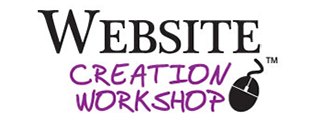If you’re building a website or working with someone who is, the term CMS is bound to come up. But what is a Content Management System (CMS)?
According to Wikipedia:
“A content management system (CMS) is a computer application that supports the creation and modification of digital content. It typically supports multiple users in a collaborative environment.”
If that definition feels a bit technical or confusing, don’t worry—you’re not alone. A CMS is actually a simple and incredibly useful tool in the world of websites. Think of a CMS as your website’s ultimate helper: it simplifies how you create, organize, and manage content without needing a tech degree. Let’s break it down and explore why it’s essential for managing your website content.
What a CMS is NOT
In the early days of website building, creating a website was much harder and more technical. You had to build the site on your computer using special software. Programs like Dreamweaver were popular, and some people even used basic text editors to write code line by line. Imagine typing every single detail by hand!
After building the website, you had to upload your files to your hosting server using FTP (File Transfer Protocol), a fancy way of moving files from your computer to the Internet.
This method of website creation was not a CMS. It was slow, hard to update, and required coding knowledge. Plus, the websites were static, which means you couldn’t make quick changes without redoing a lot of work.
Luckily, CMS platforms changed everything, making websites easier to create and manage.
Then, What is a CMS?
Website building has improved greatly over the years, and one of the biggest changes has been the move from non-CMS methods to CMS platforms.
Without getting too technical, a Content Management System (CMS) is a tool for organizing and displaying content on a website. It pulls together text, images, and other data to create web pages that visitors see. More importantly, a CMS allows website owners to easily update their content using online tools—no coding required!
WordPress is a great example of a CMS – it powers thousands of websites and blogs, including this one. While blogs often use CMS platforms, even websites without blogs rely on CMS tools to manage content quickly and simply.
Video on “What is a Content Management System?”
Here is a simple, easy-to-understand video that explains what a content management system is—and, of course, WordPress is the best one!
The Difference Between a Non-CMS Website vs. CMS Website
Here’s a simple comparison:
A Non-CMS Website
- You must know coding languages like HTML or PHP to build a website. You also need web design software and an FTP program to upload files from your computer.
- If you want to make a change across all pages (like updating the footer), you have to edit each page individually. These pages are called static because they don’t update automatically.
- Keeping the website up-to-date is difficult, so visitors often end up seeing outdated information.
A CMS Website
- The software is accessed online, and the interface is usually user-friendly. You don’t need to know any coding to create or manage your site.
- Updating or adding pages is quick and easy, so it’s much simpler to keep your content fresh.
- CMS websites are dynamic – they pull data from a database to update pages automatically.
- Because CMS platforms are easier to use, websites take less time to build, saving time and money.
WordPress is the Most Popular Content Management System
There are plenty of CMS options, but the choice is clear: WordPress! It’s been the most popular CMS for years, and for good reason. At the time of writing, WordPress powers about 51% of all CMS websites worldwide.
I fell in love with WordPress years ago and watched its popularity grow without slowing down. It’s easy to use (you don’t have to be a tech expert to create your own site), scales with your business as you grow, and honestly—it’s a lot of fun to work with!
If you’re still on the fence, check out these related posts to see why WordPress is perfect for non-techie business owners:
The Difference Between a CMS and a CRM
You might hear the term CRM alongside CMS and wonder, “Are they the same thing?” While both tools help you manage information, they serve very different purposes.
CMS stands for Content Management System. Its main job is to help you create, organize, and update the content on your website. Think of it as the behind-the-scenes tool that makes your website look great and function smoothly—without needing to know how to code.
CRM stands for Customer Relationship Management. This tool is all about managing your interactions with clients and customers. A CRM helps you keep track of leads, customer details, emails, and even sales. It’s like having a digital filing cabinet to organize your client relationships.
Final Thoughts
A Content Management System is a powerful tool that gives you control over your website without the stress of coding. With platforms like WordPress, you can easily build, update, and manage your content, saving time, money, and frustration.
So, if you’re ready to say goodbye to outdated, complicated website-building methods, a CMS is the answer. WordPress, in particular, is perfect for non-techie business owners who want a professional, functional site that’s easy to maintain.
Ready to learn more? Check out the related posts above and see why WordPress is loved by millions worldwide. Your dream website is closer than you think!


































